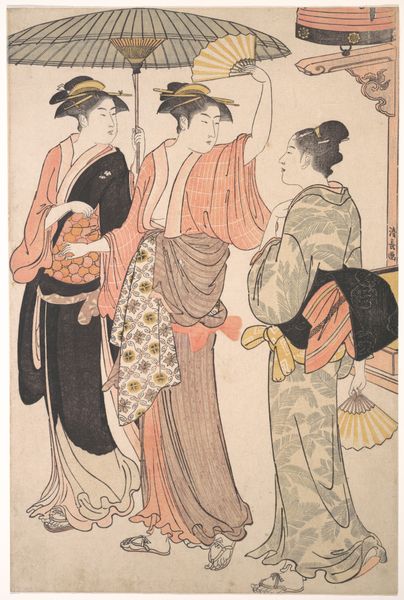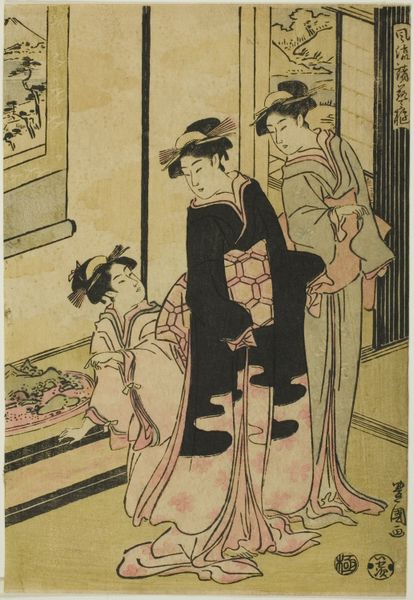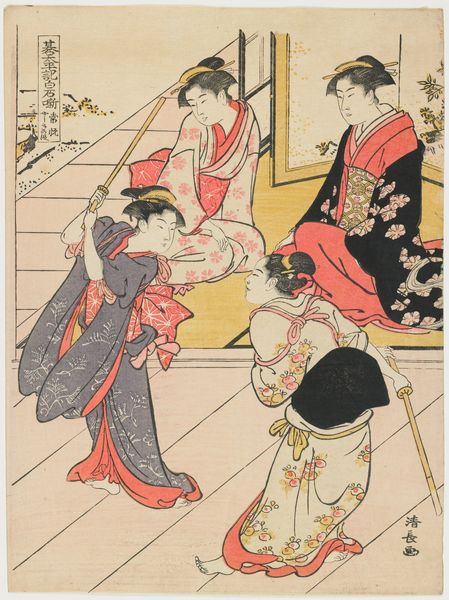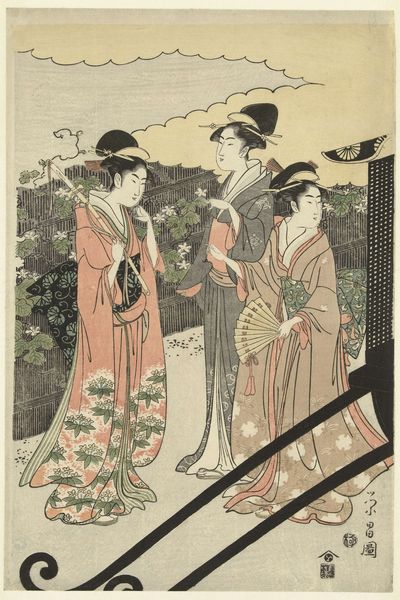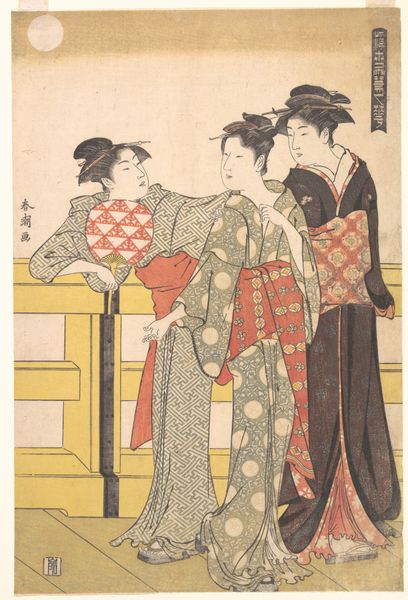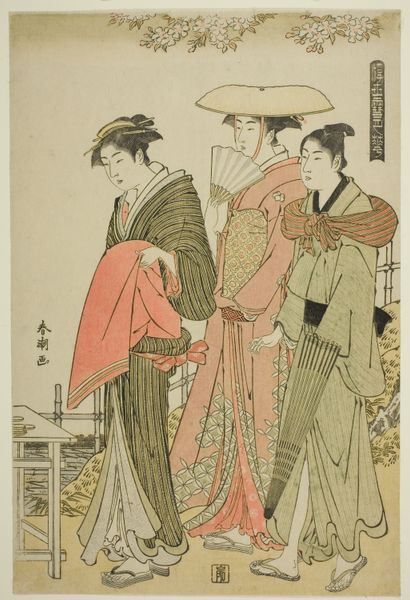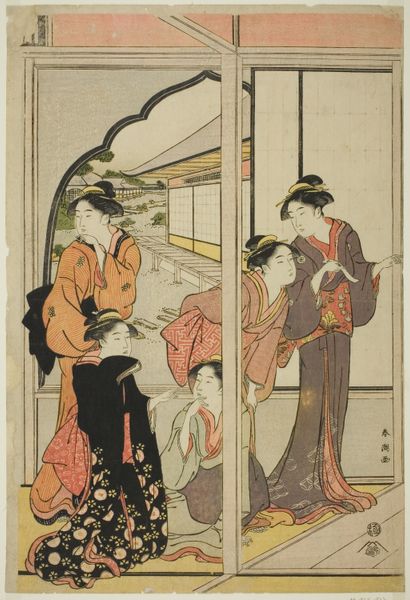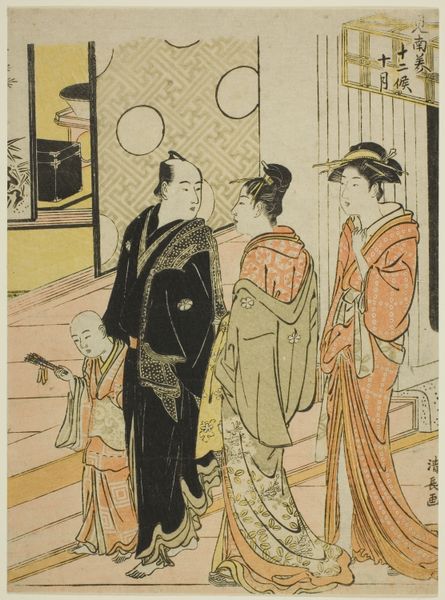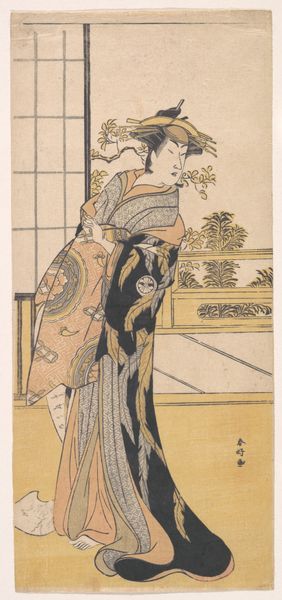
The Courtesan Katsuyama of the Echizenya House c. 19th century
0:00
0:00
print, ink, woodblock-print
# print
#
ukiyo-e
#
figuration
#
ink
#
woodblock-print
#
genre-painting
#
erotic-art
Dimensions: 12 5/8 × 8 3/4 in. (32.07 × 22.23 cm) (image, vertical ōban)
Copyright: Public Domain
Editor: Here we have Torii Kiyonaga's woodblock print, "The Courtesan Katsuyama of the Echizenya House," likely created in the late 18th or early 19th century. It’s part of the Ukiyo-e movement. The cool, restrained colors give it a sense of elegance, don't you think? What do you see in it? Curator: I see more than just elegance. This image is steeped in the complex socio-political context of the Edo period. The "floating world" of Ukiyo-e often depicted courtesans like Katsuyama. We must critically examine these depictions. How are women being represented? Whose gaze are we seeing through? Editor: I hadn't thought about that. I just assumed it was a straightforward portrait. Curator: Not quite. Ukiyo-e prints, while seemingly celebratory, also served as advertisements for the pleasure quarters. Think about the power dynamics inherent in this: women, often from marginalized backgrounds, commodified and displayed for male consumption. Even the beautiful fabrics they are wearing tell a story of consumer culture. What do you notice about their poses? Editor: They seem…reserved, almost staged. Curator: Exactly! The artist controls their presentation, shaping our perception. This distance highlights the artificiality of the "floating world" and prompts questions of agency. Does this print reinforce societal norms, or does it offer a subtle critique? Where does its beauty reside? Editor: This makes me rethink everything I thought I knew about Ukiyo-e! I need to consider the deeper power structures represented here. Curator: Precisely. Engaging with art critically means acknowledging the complex web of social, economic, and political forces that shape both its creation and our understanding of it. Editor: This print now speaks volumes more than it did before. It’s really about power and representation, not just beauty. Curator: Indeed. That's the power of intersectional art history: unearthing hidden stories and challenging dominant narratives.
